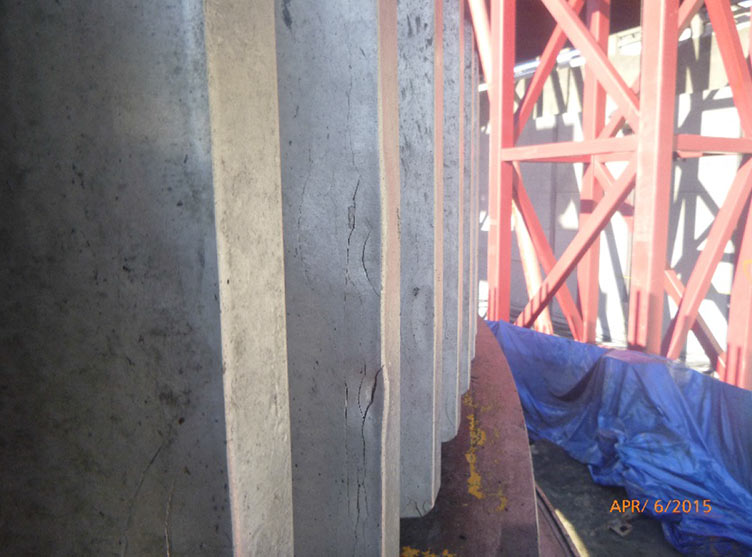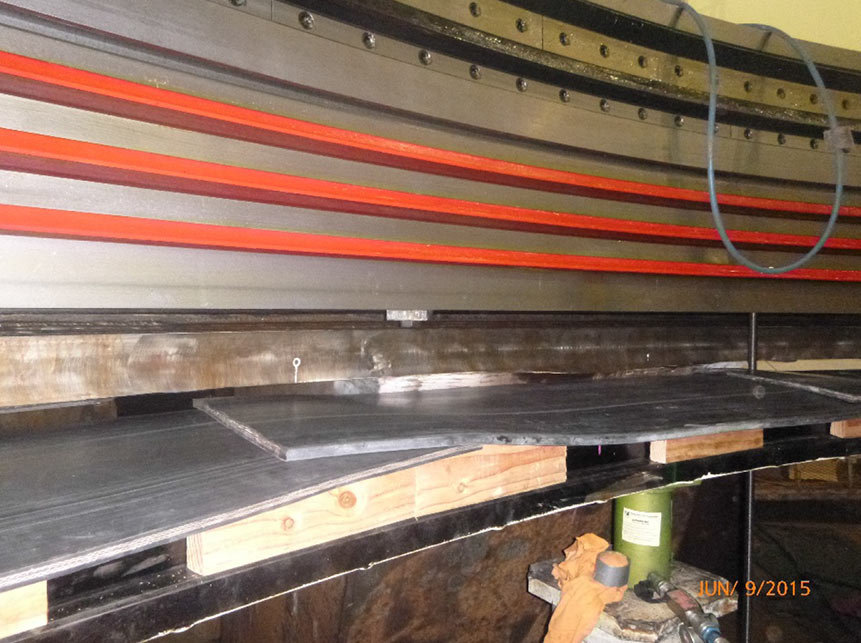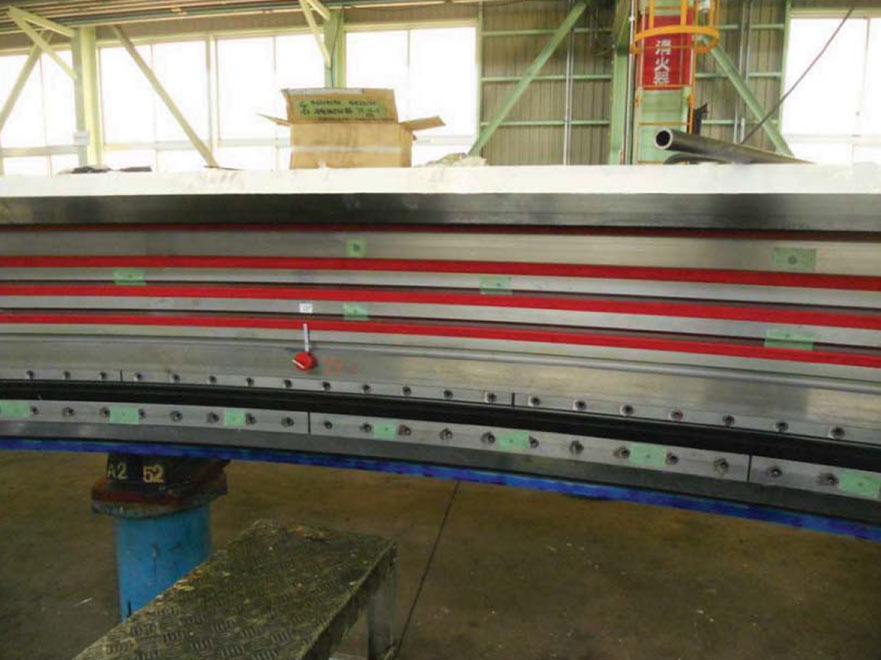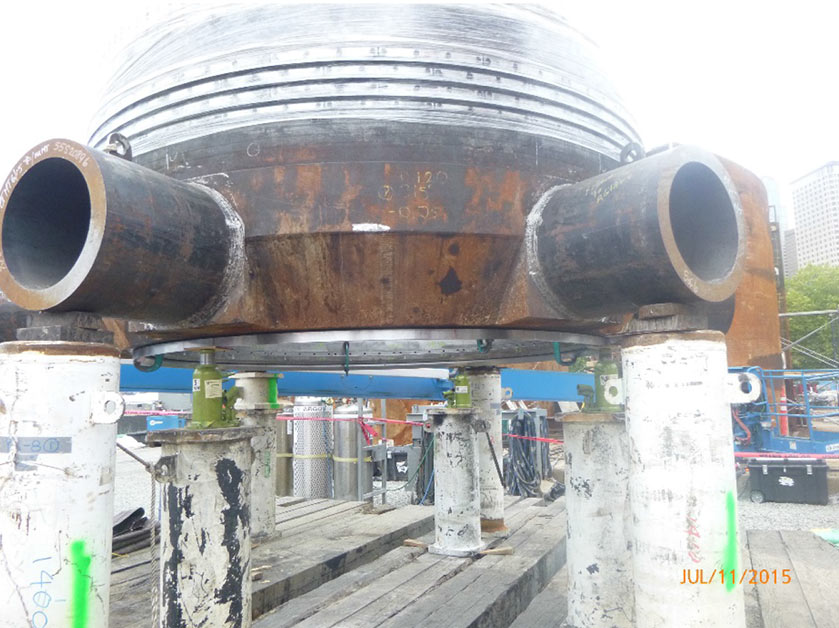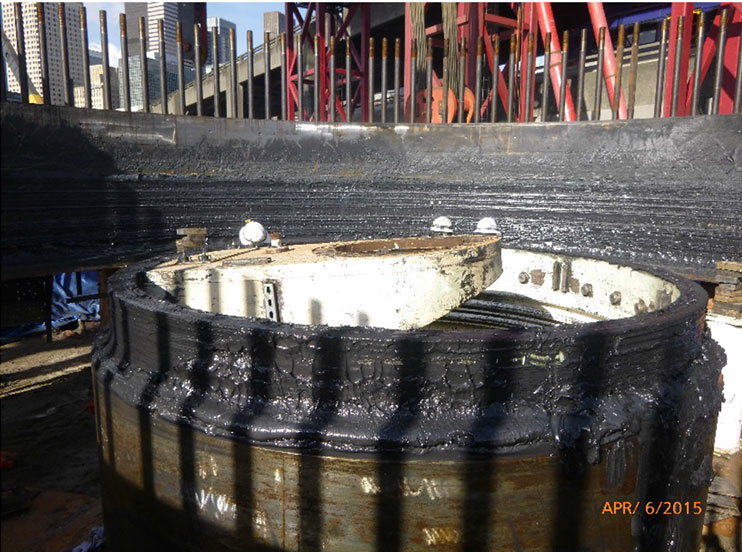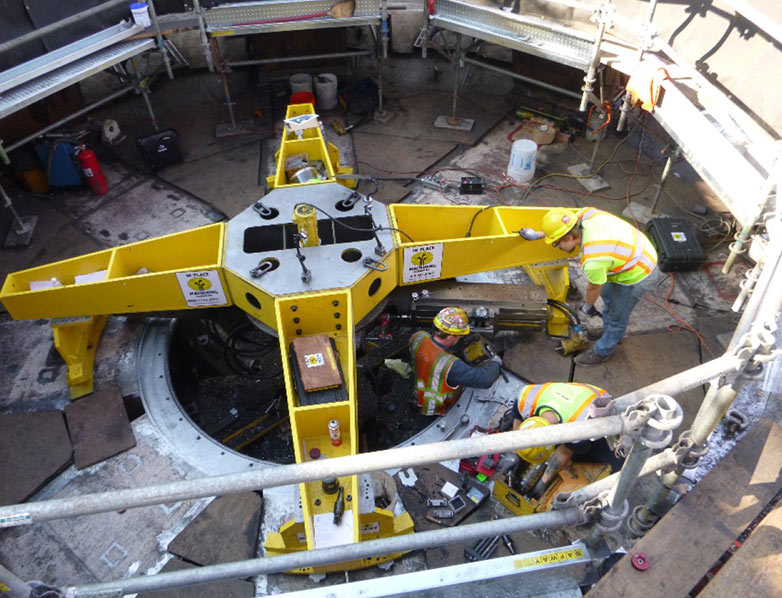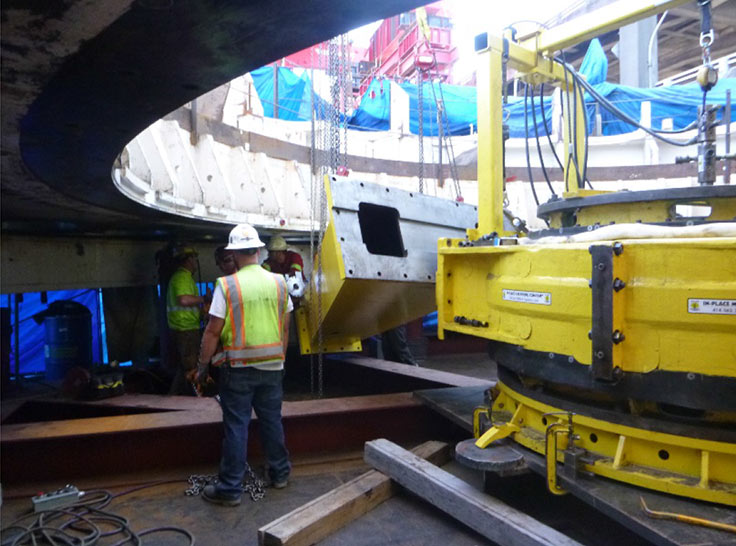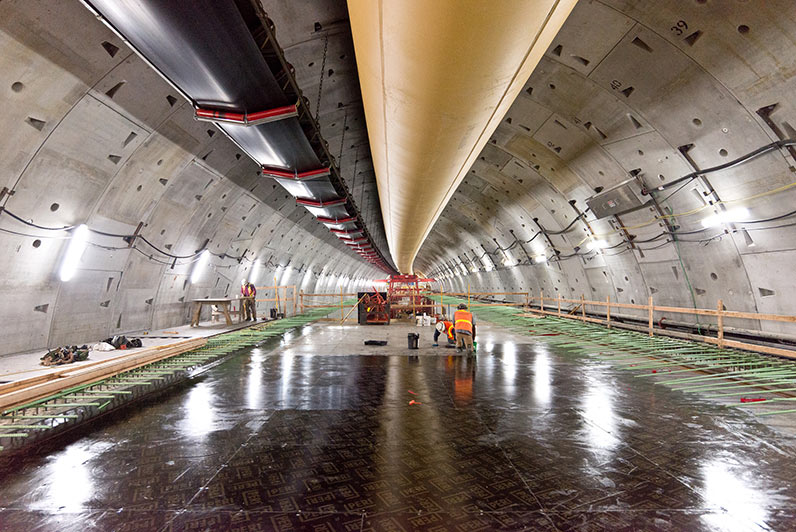Bertha relaunch delayed until November in Seattle 22 Jul 2015
The best-laid plans for relaunch in August of the repaired mega-TBM in Seattle on the SR99 Alaskan Way viaduct replacement tunnel project have proven too ambitious and a revised schedule from the design-build contractor, STP (Seattle Tunnel Partners), has relaunch reset for 23 November 2015.
This adds a further three months to the initial 24 month delay estimated by STP for repair of the 17.5m diameter Hitachi Zosen EPB machine after it came to a halt in December 2013 and pushes the original December 2015 opening date of the new highway tunnel to Spring 2018.
At a media briefing last Friday (17 July 2015), Chris Dixon, Project Manager of STP for the Dragados and Tutor Perini JV, and Todd Trepanier, Program Administrator of the project for the Washington State Department of Transportation (WSDOT) explained the phases of the revised schedule, the extent of the repairs required, and the implications of the added delay to the travelling public and the taxpayers of Seattle.
In his presentation Dixon explained that installation of the new main bearing during the week begins the reassembly phase of the machine in the bottom of the emergency recovery shaft, ready for a phased testing programme during September and October and described the substantial repairs and many component replacements required to prepare the TBM for it relaunch through the shafts headwall to resume boring on 23 November on its 1.7 mile (2.7km) long drive towards a planned North Portal breakthrough in November 2016.
Chris Dixon (right) and Todd Trepanier (left)
explained the revised schedule at the media event
Dixon explains that Hitachi Zosen is fully
committed to the EPBM repair process
Once reassembled, there will be preloading test program of the machine, to verify all the repairs and rebuilds. This will be followed with a backfilling of the 120ft deep recovery shaft and a restoration of the ground water table within and around the outside of the shaft for a fully loaded performance commissioning test before progressing through the diaphram wall of the shaft and into the virgin ground of the remainder of the drive.
In describing the necessary repairs of the machine, Dixon highlighted an almost complete remanufacture and rebuild of the vital drive unit and cutterhead of the mega-TBM and all to be achieved on a job site rather than in a factory. After lifting the cutterhead and main drive unit of the machine to the surface in March of this year, full disassembly of the components allowed assessment of the substantial repairs required. In addition to installation of a the spare main bearing, STP, with the full commitment and collaboration of Hitachi Zosen in Japan and its on-site engineering crews, is replacing the main bearing sealing system with one that is more robust that allows easier access from within the machine, upgrading the tools and modifying the openings of the cutterhead, adding further reinforcing steel, installing additional monitoring systems and upgrading the agitator system and the TBM’s soil-conditioning system to help prevent clogging of material in the plenum of the mega EPBM.
“Fully disassembling and assessing the machine was always the key to determining how long the repairs would take,” said Dixon. “We want to reassemble the machine and resume tunneling as quickly as possible, but we also want to ensure the repairs are done right.” Hitachi Zosen is extremely involved in the repairs and relaunch testing phases of the machine explained Dixon.
Repairs in detail
Cutterhead: When the cutterhead was lifted to the surface from the recovery shaft, its tools were all worn down and abrasive wear of the cutterhead structure itself was evident (left). Repair of the cutterhead (centre) included fitting of a new complete set of heavier cutter tools and extra hardfacing to protect wear surfaces from the abrasive glacial materials of the Seattle area (right).
Main Bearing: Failure of the main bearing seal allowed soil contamination to inflict damage to the bullgear (left) and the rollers of the main bearing itself (centre two). A spare bearing was a requirement of the project contract with WSDOT and the machine’s spare bearing (right) was shipped from Hitachi Zosen in Japan for installing into the TBM as part of the repair process.
Pinions: The pinions of all 24 x 560kW motors of the giant 17.5m diameter EPBM had to be removed and their pinions changed out (left). Contamination into the drive unit through the failed seals inflicted heavier pitting damage on the softer pinion metal (centre) than on the harder metal of the bullgear (above left). New pinions were made ready in the Hitachi Zosen factory in Japan for shipment to Seattle.
Inner Seals: The recovered inner bearing seals, still covered with bearing seal grease (left), will be replaced with a new improved design of inner seals to protect the main bearing in the drive unit (right) as it holds the rotating cutterhead.
Outer Seals: Recovered drive unit housing and bullgear, still covered with bearing seal grease (left), and cleaned off (left centre) to reveal damage caused by contamination through the main bearing seals. The new outer bearing seals were assembled in the Hitachi Zosen factory in Japan for shipping to Seattle for installing into the rebuild of the TBM (centre right and right).
Agitators: New extended agitators, together with improvement of the TBM’s soil-conditioning system, will help prevent clogging of material in the plenum of the mega EPBM.
Center Pipe: Severe damage to the center pipe of the TBM’s cutterhead assembly (left and left center) required fabrication of a new center pipe (center right) and preparations on site for its installation as part of the machine’s rebuild (right).
Bearing Block Machining: Precision machining of the bearing block has been required to ensure of the drive unit components for the TBM’s rebuild.
Program Administator Trepanier for WSDOT said that the State, as STP’s customer, was not able to verify the contractor’s new schedule. “The contractor has revised its schedule,” he said, “but the contract that governs its work remains the same. The State is a paying customer in this transaction and we are intent on getting what we contracted for. We will continue to protect taxpayers and hold the contractor responsible for its work to deliver this vital project.”
Tunnel boring halted in December 2013 when the machine overheated and after completing the first 1,000ft of the total 9,000ft drive of the double deck highway tunnel. After an investigation, STP crews discovered damage to the seal system and determined it needed to be replaced. At the same time it was considered prudent to install also the contract’s required replacement the main bearing. The cause of the damage has not been determined. Responsibility for costs associated with the delay is being determined through the processes outlined in the tunnel contract.
While the machine has been under repair, STP has continued essential work elsewhere along the SR99 corridor.
Crews are working at the North Portal of the highway tunnel (left), as well as building the operations buildings at the both portals with the yellow ventilation stacks already in place at the South Portal operations building (right). Within the completed section of TBM bored tunnel, STP has cast about 450ft of the upper road deck of the double deck highway tunnel (center) with two highway-grade traffic lanes on each deck of the boxed in interior of the 15.85m i.d. precast segmentally lined tunnel. Production of all the segments required for the 1.98m wide rings of segmental lining for the tunnel is also complete.
References
- TBM Bertha suffers main bearing seal failure – TunnelTalk, February 2014
- Discussing Seattle TBM repair strategy – TunnelTalk, July 2014
- Technical parameters of Seattle's mega EPBM – TunnelTECH, December 2012
- Alaskan Way contract signed with STP – TunnelTalk, January 2011
|
|
|
|
|
Add your comment
- Thank you for taking the time to share your thoughts and comments. You share in the wider tunnelling community, so please keep your comments smart and civil. Don't attack other readers personally, and keep your language professional.






